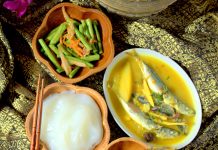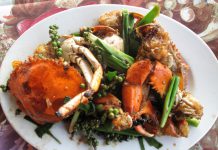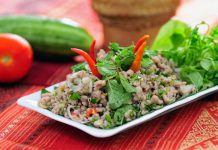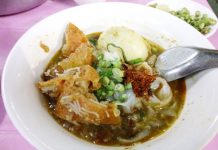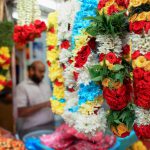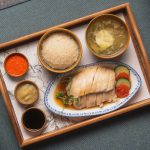Thanks to Singapore’s multi-ethnic culture and heritage, there is an abundance of local dishes available, each with its own unique flavour. Singapore’s hawker centres are the best places to sample a wide range of local delights under one roof at affordable prices.
Don’t know where to start? These are the yummy must-eats you cannot miss!
Bak Chor Mee
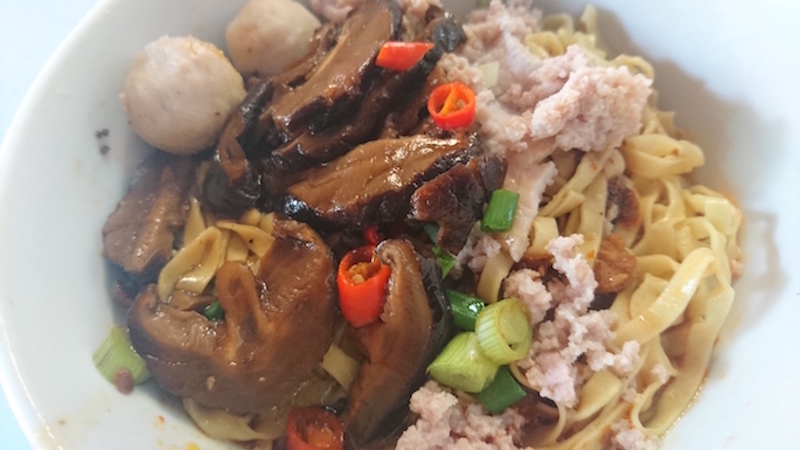
Teochew term for “minced meat noodles”, bak chor mee consists of springy egg noodles (choose flat mee pok or thin mee kia noodles) topped with minced pork or pork slices and sometimes pork liver, mushrooms, meatballs or fish balls and fish cakes, tossed in soy sauce, chilli and black vinegar. You can opt for a non-spicy dry version or a soup version. Some stalls also offer other noodles such as kway teow (flat rice noodles), bee hoon (vermicelli) and mee sua (thin salted wheat noodles).
Bak Kut Teh
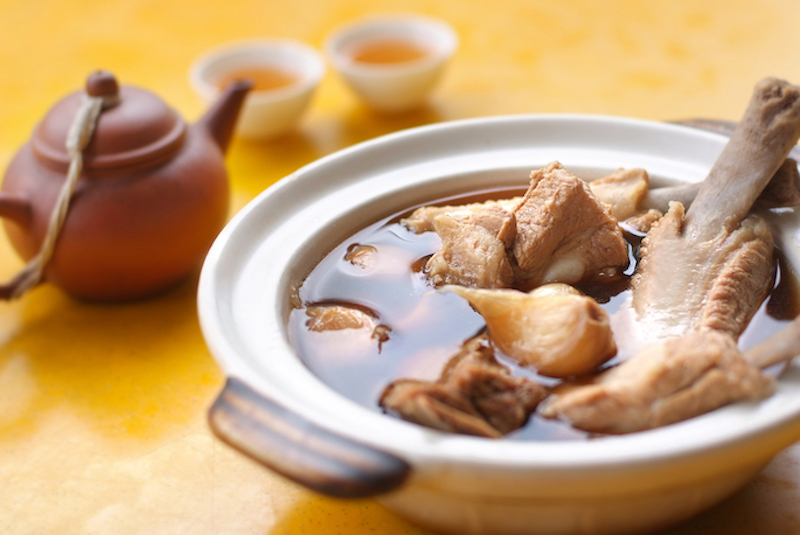
This Hokkien dish (directly translated as “meat bone tea” though there’s no tea in it) of pork rib soup is infused with aromatic herbs and spices such as pepper, garlic, cloves, cinnamon, star anise, fennel seeds and coriander. Typically eaten with steamed white rice, you tiao (fried dough fritters), tau pok (bean curd puffs), pig innards and kiam chye (preserved vegetables).
Char Kway Teow
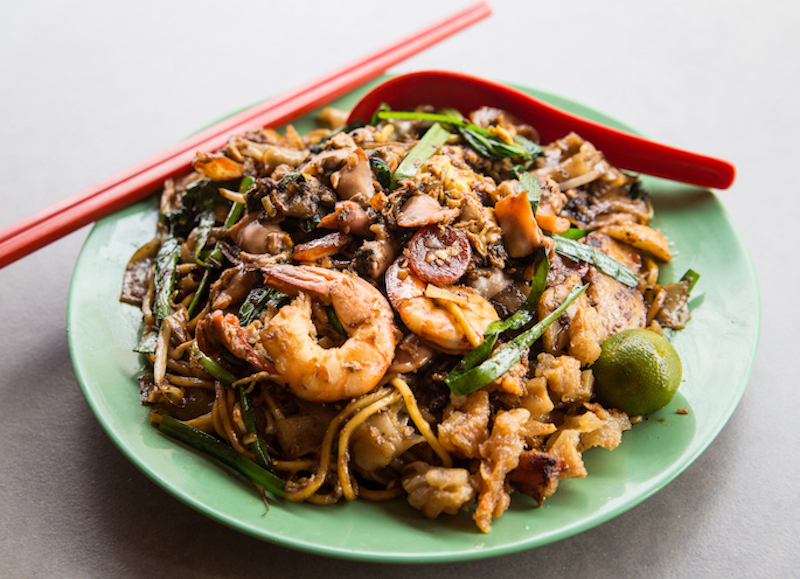
Directly translated as “stir-fried rice noodles” in the Hokkien vernacular, the local version has yellow wheat noodles and broad rice noodles stir-fried together with pork lard, sweet dark soy sauce, light soy sauce, sweet flour sauce, bean sprouts, chopped spring onions, eggs, lap cheong (Chinese sausages), fish cakes, chilli paste (optional) and cockles (optional). A good plate of char kway teow should boast smoky flavours from the wok or wok hei (Cantonese for “smoky aroma”).
Chilli Crab
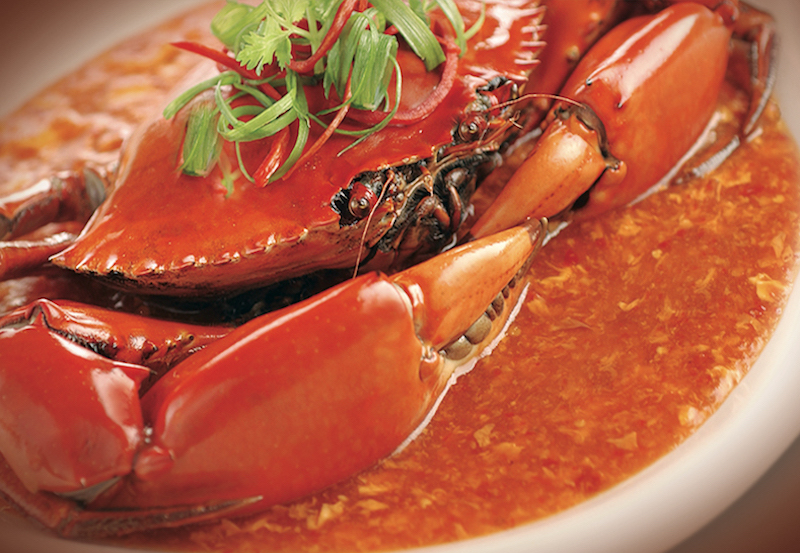
Singapore’s most famous seafood dish is best eaten with your hands. The crabs are cooked in a thick and spicy sauce made with ingredients such as fresh red chilli, bird’s eye chilli, tomatoes, vinegar, garlic and egg white. The dish is usually served with fried mantou (Chinese-style bun) for mopping up all that luscious gravy.
Fish Head Curry
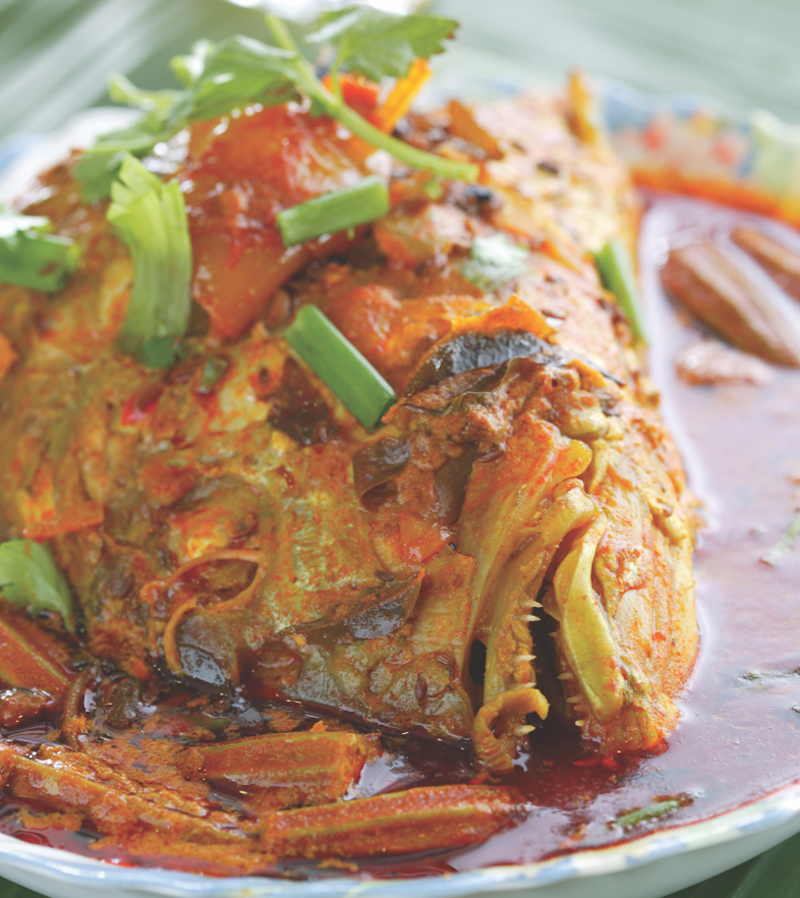
This spicy dish is unique to Singapore as it blends the spices of a typical South Indian fish curry with the fish head, a delicacy among the Chinese. Served in both Indian and Chinese eateries or food stalls with slight variations, the curry comprises a whole fish head cooked with lady’s finger, eggplant, long beans and tomatoes in a spicy curry. In some Indian eateries, the curry is poured over rice served on fresh banana leaves.
Fried Carrot Cake
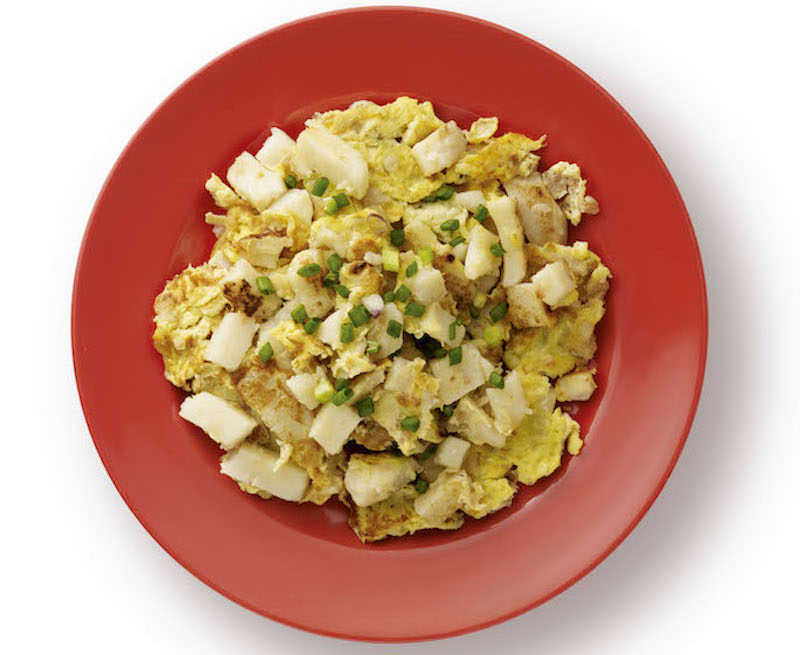
This Teochew dish, aka chai tow kway, is made with white radish or white carrot and rice flour. The radish cake is steamed, then cut into cubes and fried with chopped garlic, chai poh (preserved radish), eggs and chilli paste (for a spicy version). Two variations are available – white carrot cake is stir-fried with light soy sauce (photo above) while black carrot cake is stir-fried with sweet dark soy sauce. Some stalls stir-fry the carrot cake with bean sprouts.
Hainanese Chicken Rice
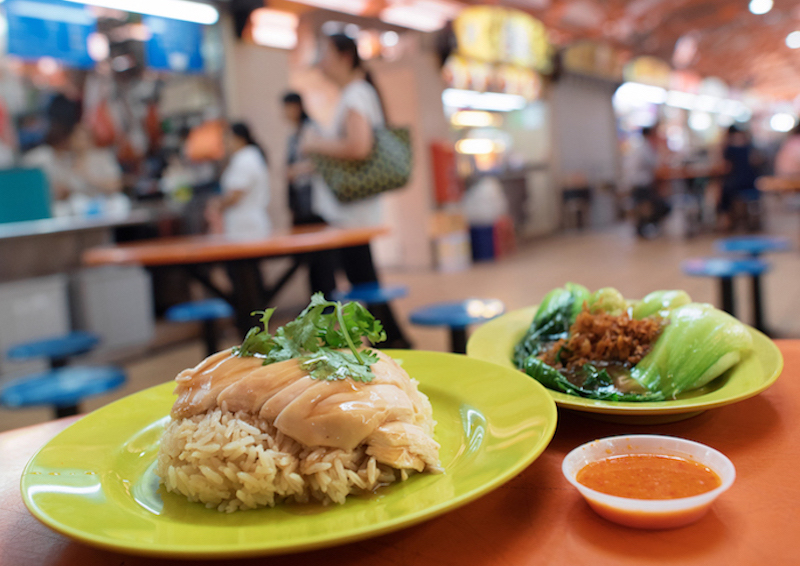
Possibly the country’s most famous dish. Most stalls offer a choice of poached or roasted chicken usually served at room temperature, while some serve chicken braised in soy sauce. The aromatic rice, served warm, is cooked in chicken stock, garlic, ginger and pandan (screwpine) leaves. Eat it with tangy chilli sauce, dark soy sauce (dribble over the rice), ginger paste and a bowl of hot soup. Some stalls offer side dishes of bean sprouts and oyster sauce green vegetables.
Fried Hokkien Mee
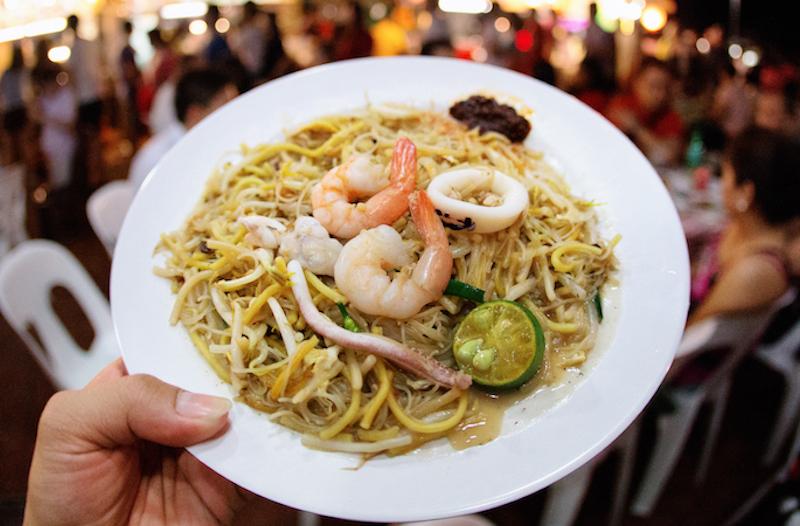
Also known as Hokkien prawn mee, this uniquely Singapore dish features two kinds of noodles – yellow wheat noodles and thick bee hoon (vermicelli). Both noodles are stir-fried in a rich prawn and pork bone stock, along with bean sprouts, prawns, squid, egg and crispy pork lard. It is served with lime and chilli on the side.
Kaya Toast
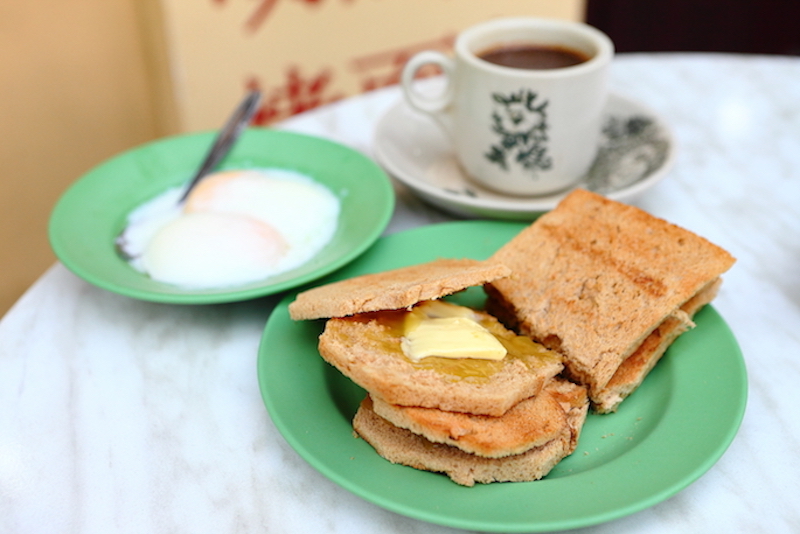
Classic Singaporean breakfast of toasted crust-free bread slathered with kaya (coconut-egg jam) and slabs of butter, accompanied by two soft-boiled eggs with a dash of dark soy sauce and white pepper, plus a cup of kopi (local-style coffee strained through a sock filter).
Laksa
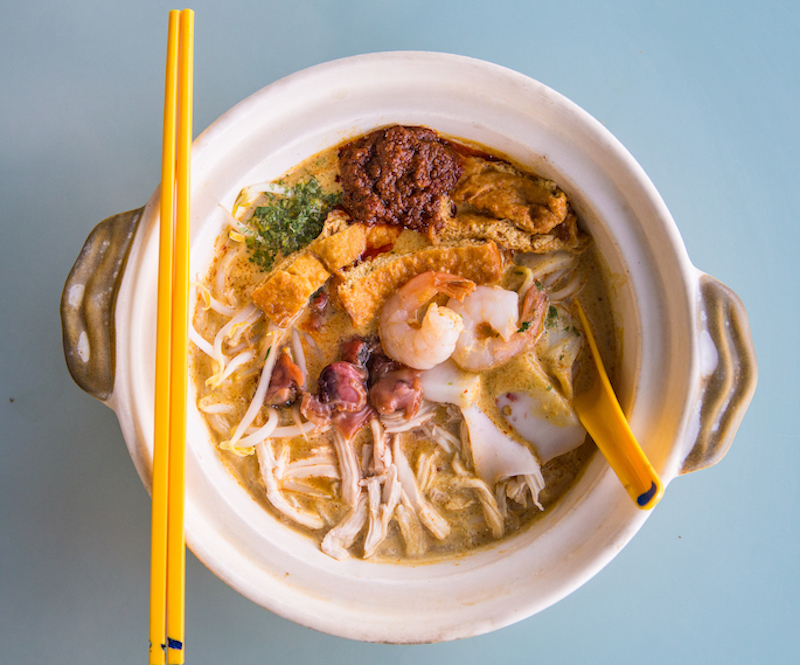
There are a few versions but the most popular one is laksa lemak where thick beehoon (rice noodles) is served in a spicy, coconut milk soup, with beansprouts, taupok (dried bean curd puffs), prawns, fish cake slices, cockles and finely chopped, aromatic laksa leaves. Some stalls serve it only with a Chinese soup spoon as it’s possible to slurp everything up by the spoonful.
Rojak
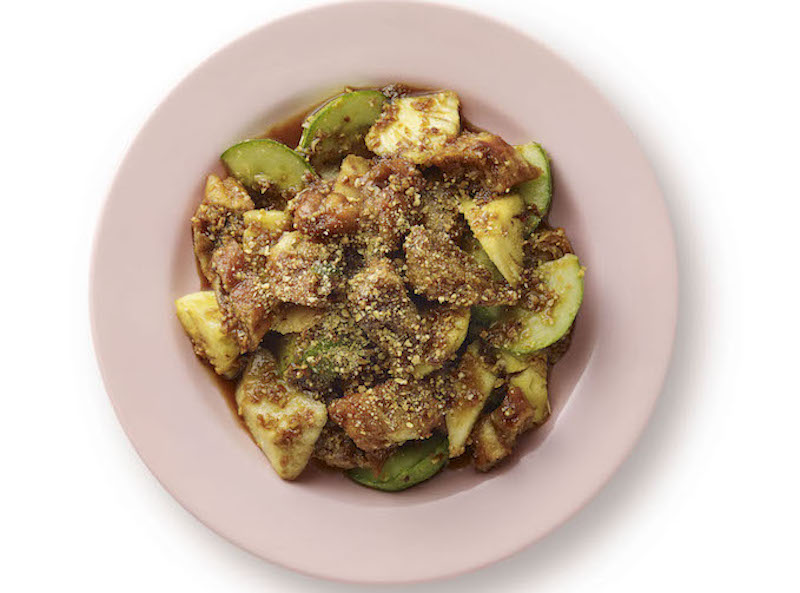
This vegetable and fruit salad (rojak is the Malay word for “mixed”) is sweet, spicy, crispy and crunchy. It is made up of bean sprouts, cucumber, turnip, pineapple, young mangoes, you tiao (fried dough fritters) and toasted tau pok (bean curd puffs), tossed in sticky hae ko (shrimp paste), sugar, lime juice and chilli paste, and topped with crushed toasted peanuts.
Roti Prata
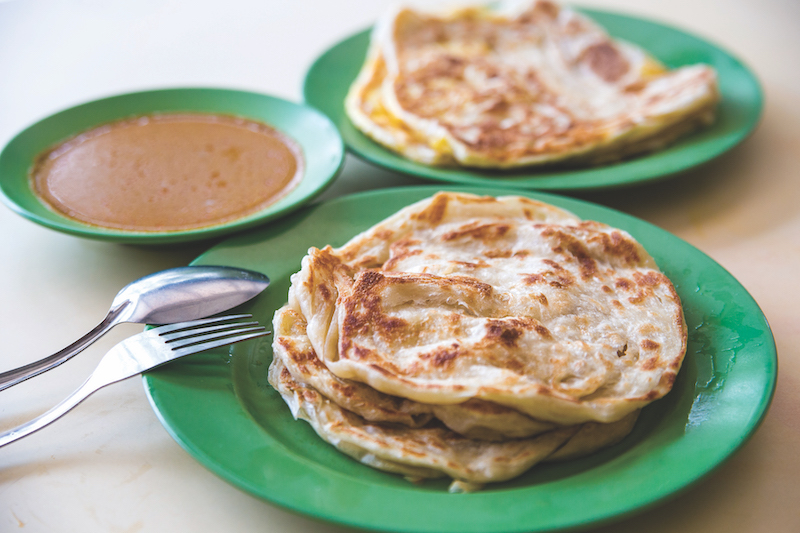
This South Indian flatbread (“roti” means “bread” and “prata” means “flat”) is crisp on the outside and soft and chewy on the inside. It is usually eaten with fish, meat or vegetable curries. Besides the plain roti, an egg version called roti telur is common. New versions have cropped up in recent years with the addition of ingredients such as cheese, mushrooms, bananas, jam, sugar and chocolate to the roti. It’s fascinating to see the prata man skilfully stretching, flipping, twirling and flattening the dough before it’s cooked on a ghee-laden hot griddle.
Satay
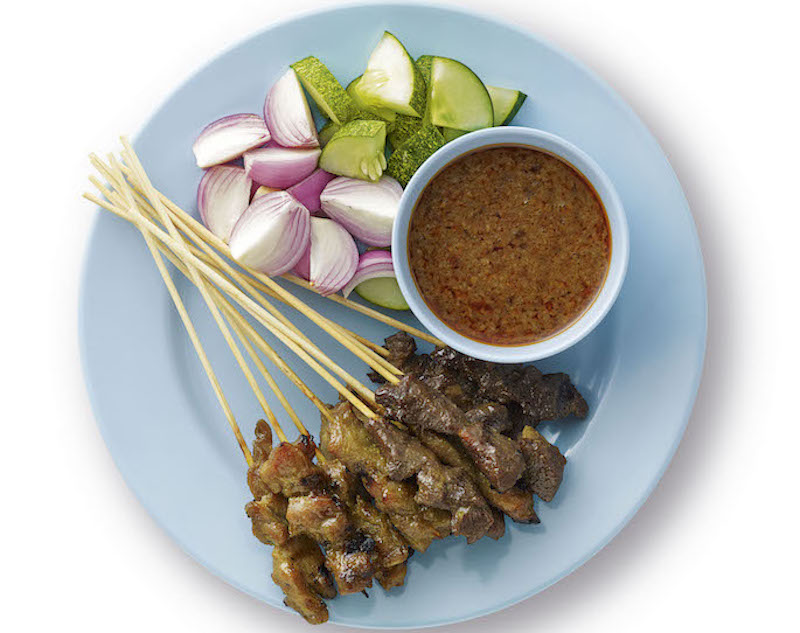
A must-have for meat lovers, this dish of char-grilled marinated meat on skewers is served with a spicy peanut sauce, ketupat (rice cakes), and cuts of cucumber and onion. Halal stalls usually offer a choice of chicken, beef and mutton satay, while non-halal ones may offer pork satay.
Wanton Noodles
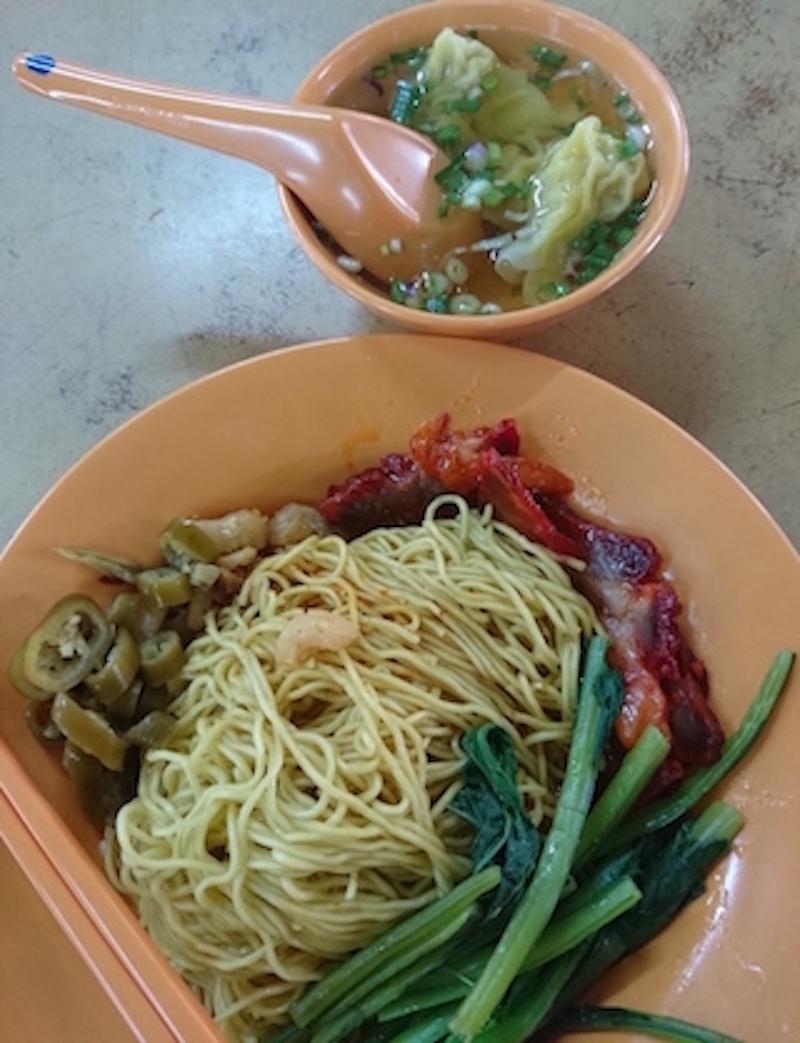
Also called wanton mee, this Cantonese dish is comfort food for many Singaporeans. It is typically served dry, with flat (mee pok) or thin (mee kia) egg noddles tossed in dark soy sauce, oil and chilli paste (optional, sometimes ketchup is added in place of chilli), and topped with char siew (barbecued pork), leafy greens, boiled pork or shrimp wantons (dumpling), and sometimes deep-fried wantons. Some stalls offer both boiled and deep-fried wantons, with the former served in a soup on the side. The noodles should be springy (or what locals call “QQ”) and cooked al dente.


